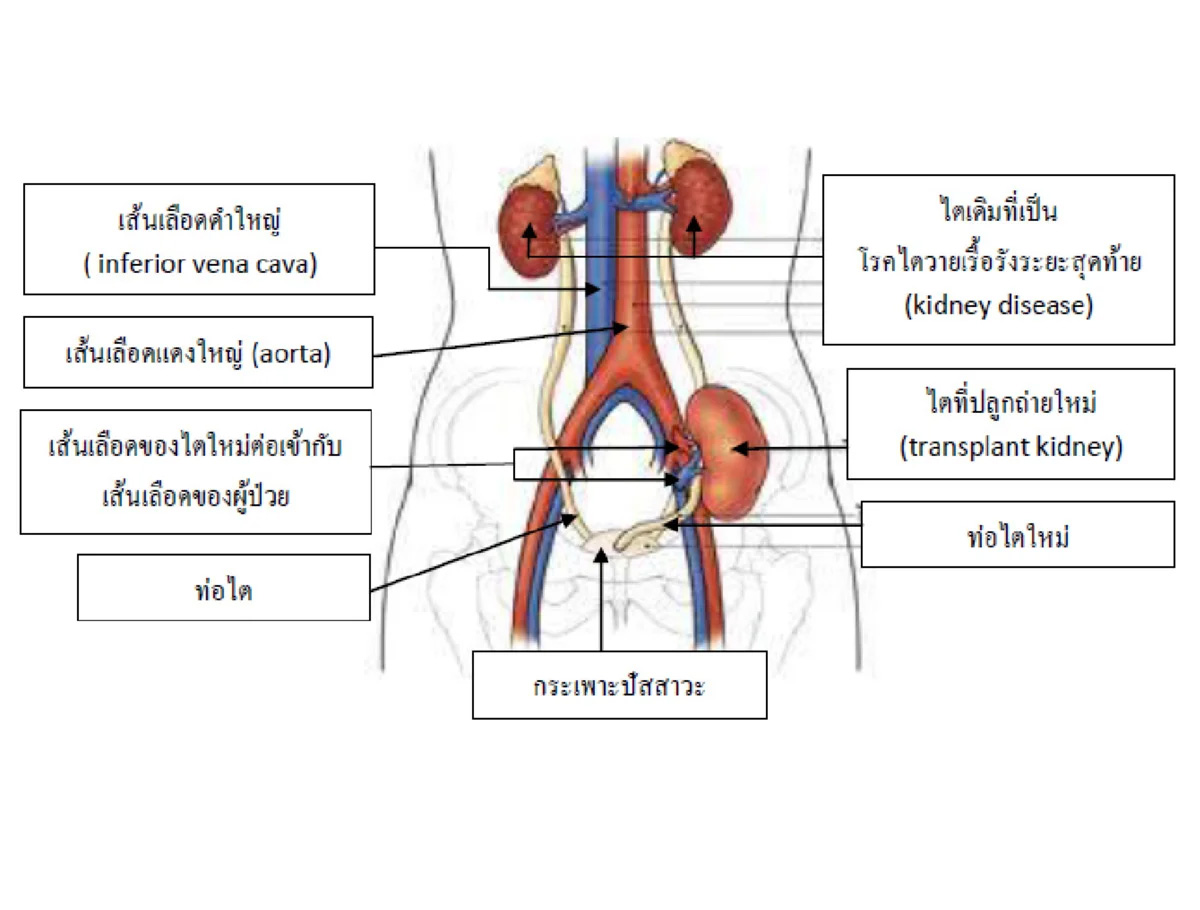Renal masses have become increasingly common in today’s society, thanks to easier access to health screenings and modern diagnostic tools using advanced radiological techniques. These masses can be both non-cancerous and cancerous.
Non-cancerous renal masses, commonly found during incidental ultrasound examinations, often pose no threat and may not require treatment. However, an assessment of the risk of hidden kidney cancer within certain types of renal cysts is essential. Computerized tomography (CT) scans can precisely distinguish various types of renal cysts and clearly identify solid masses.
One common non-cancerous renal mass is Angiolipoma (AML), a smooth muscle and blood vessel-containing fatty tumor. Larger AMLs may exhibit a risk of bleeding due to vessel rupture, necessitating treatment through surgical removal or induced shrinkage. Smaller AMLs can be monitored periodically using ultrasound.
Renal cell carcinoma, or kidney cancer, is a less prevalent form of cancer compared to others. The incidence of kidney cancer is approximately 1.6 cases per 100,000 people, with a higher occurrence in males than females. The disease is commonly diagnosed in individuals aged 50-70 years. Although kidney cancer is less frequent, it can still pose a significant threat. Untreated cancer cells can uncontrollably divide and, if left untreated, may metastasize to other organs such as the lungs and bones.
It’s important to note that advancements in medical imaging and early detection have significantly improved outcomes for individuals with renal masses, allowing for timely intervention and appropriate management based on the nature of the mass—whether benign or malignant. Regular health check-ups and screenings play a crucial role in identifying and addressing renal masses promptly.
Causes and Risk Factors of Kidney Cancer
As of now, the definitive causes of kidney cancer are not clearly understood. However, certain risk factors have been identified that increase the likelihood of developing kidney cancer. These factors include:
- Age: The risk of kidney cancer tends to increase with age. The highest incidence is observed in individuals aged 50-70 years.
- Gender: Kidney cancer is more prevalent in males, with approximately twice the incidence compared to females.
- Smoking: Individuals who smoke cigarettes are more likely to develop kidney cancer. About one-third of kidney cancer cases are attributed to smoking.
- Obesity: Being overweight or obese is a risk factor for kidney cancer.
- High Blood Pressure: Individuals with high blood pressure have an increased risk of developing kidney cancer.
- Chronic Kidney Disease: Individuals with chronic kidney disease requiring long-term dialysis are at an elevated risk.
- Genetic Factors: Some hereditary conditions or mutations in certain genes may increase the risk of kidney cancer.
- Family History: Having a family member diagnosed with kidney cancer can elevate an individual’s risk.
- Exposure to Chemicals or Toxins: Prolonged exposure to certain chemicals or toxins, such as asbestos and cadmium, may contribute to kidney cancer.
Symptoms of Kidney Cancer
Kidney cancer in its early stages often presents with no clear symptoms and is frequently discovered during routine health check-ups or examinations unrelated to kidney issues. It is usually not until the cancerous tumor grows larger that noticeable symptoms appear. The symptoms that may manifest as the disease progresses include:
- Blood in the Urine: Hematuria, where the urine appears pink, red, or brownish
- Pain in the Flank Area
- Palpable Mass in the Abdomen
- Fatigue, Appetite Loss, Weight Loss
- Chronic Fever
Diagnosis of Kidney Cancer
Physicians diagnose kidney cancer through a combination of medical history inquiries, family history assessments, and physical examinations, along with various laboratory and imaging tests, including:
- Blood and Urine Tests
- Imaging Tests: Ultrasound: Uses sound waves to create images of the kidneys, helping identify tumors or abnormalities.
– CT Scan (Computed Tomography): Produces detailed cross-sectional images of the kidneys, aiding in the detection of tumors.
– MRI (Magnetic Resonance Imaging): Uses magnetic fields and radio waves to create detailed images and can help identify abnormalities in the kidneys. - Biopsy (Tissue Sample): In some cases, when imaging results are inconclusive, a biopsy may be performed. A small sample of tissue is taken from the suspected area for examination under a microscope. This helps determine if cancer cells are present and provides information about the type and aggressiveness of the cancer.
- Additional Tests: Further assessments, such as a chest X-ray or a bone scan, may be conducted to evaluate whether cancer has spread to the lungs or bones. These tests aid in staging the cancer and planning an appropriate course of treatment.
Treatment of Kidney Cancer
In the treatment of kidney cancer, the physician determines the treatment approach considering the type and stage of cancer, as well as factors related to the patient such as age, overall health, and patient preferences. The main treatment modalities for kidney cancer include surgery, immunotherapy, radiation therapy, targeted therapy, and chemotherapy.
Surgery is a primary treatment to achieve a cure when the cancer has not spread beyond the kidney. There are two main types of surgical procedures depending on the stage, size, and location of the cancer.
- Radical Nephrectomy: This involves removing the entire kidney, along with surrounding tissues, such as the adrenal gland, lymph nodes, and sometimes nearby structures.
- Partial Nephrectomy: This procedure removes only the part of the kidney containing the tumor, leaving the rest of the kidney intact. It is considered in cases where the tumor is small, and preserving kidney function is crucial.
Surgical Approaches for Kidney Cancer Treatment
There are two main surgical approaches for treating kidney cancer:
Traditional Open Abdominal Surgery: This method involves making a large incision in the abdominal area. Patients undergoing this procedure may experience significant blood loss and are at risk of postoperative infections due to the larger incision. Recovery time for this traditional open surgery can be relatively long, typically ranging from 8 to 12 weeks.
- Minimally Invasive Surgery using Laparoscopy or Robotic-Assisted Da Vinci Surgical System: Minimally invasive procedures use either laparoscopy or the robotic-assisted Da Vinci Surgical System.
- Laparoscopy: A surgical technique where small incisions are made, and a camera is inserted to guide the surgeon during the procedure. Robotic-Assisted Da Vinci System: Utilizes robotic arms controlled by a surgeon to perform precise and less invasive surgery. These approaches are designed to enhance efficiency, precision, and safety, particularly for complex surgeries involving hard-to-reach areas like the kidney, which is deep within the body and near major blood vessels. Benefits of minimally invasive surgery include:
- Reduced surgical time, leading to less blood loss.
- Lower risk of postoperative complications, such as wound infections.
- Minimal impact on surrounding organs and tissues, reducing trauma.
- Patients experience less pain, leading to a shorter hospital stay and faster recovery.
- Smaller incisions result in minimal scarring.
Immunotherapy or Biological Therapy: Immunotherapy is a treatment method for kidney cancer that relies on the immune system’s functioning. When foreign substances enter the body, the immune system is stimulated to eliminate these abnormal elements. Physicians use medications that boost the immune system to effectively control or eliminate cancer cells in the body. This approach is employed when kidney cancer has spread outside the kidneys or when kidney cancer recurs.
Radiation therapy involves using high-energy radiation to destroy the genetic material (DNA) within cancer cells, halting their growth and ultimately causing the cancer cells to die. This treatment is often used when a patient is not fit for surgery or in conjunction with other treatments to alleviate symptoms resulting from the cancer’s spread, such as pain, bleeding, or complications arising from the cancer cells spreading to the bones and brain.
Targeted therapy is a treatment method that administers drugs or substances to inhibit signaling pathways at the cellular level, which are the root causes of cancer cell growth and division. Currently, there are two main groups of drugs: those that inhibit the formation of blood vessels that supply nutrients to cancer cells, leading to cancer spread, and those that interfere with intracellular mechanisms related to cancer growth.
Preventing Kidney Cancer
Kidney cancer can be prevented by avoiding risk factors that contribute to the development of the disease, such as:
- Quitting smoking
- Managing weight
- Controlling blood pressure
- Avoiding or protecting oneself from exposure to chemicals or toxins that can cause cancer, using protective masks.
However, since kidney cancer can also arise from unavoidable risk factors, such as genetic abnormalities, those at risk should undergo regular health check-ups. Early detection increases the chances of successful treatment.






